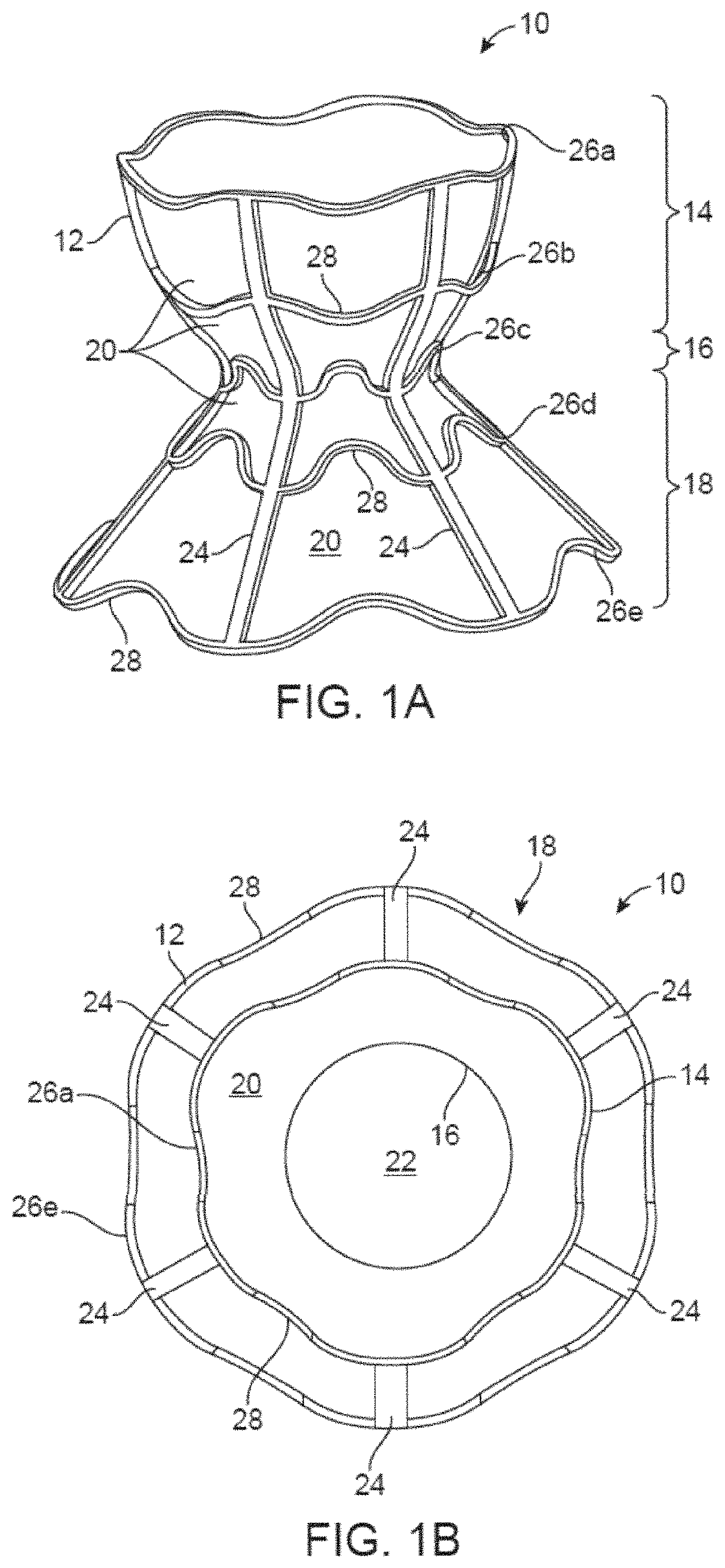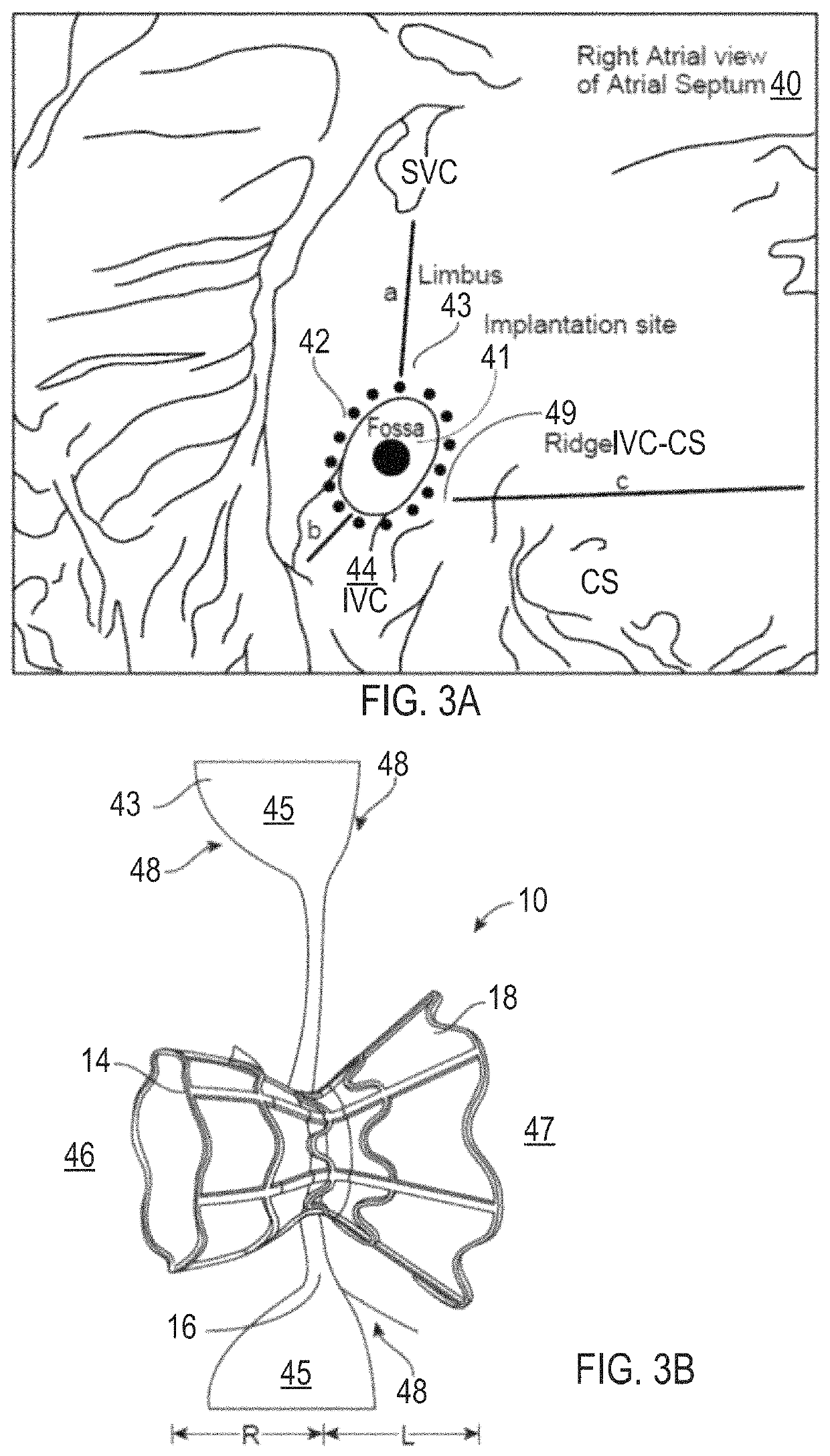Heart failure is the physiological state in which
cardiac output is insufficient to meet the needs of the body or to do so only at a higher filing pressure.
However, the larger volumes of blood also cause the heart
muscle, particularly the ventricles, to become enlarged.
However, as the heart weakens as a result of such high pressures, the disorder becomes exacerbated.
This stiffness may impede blood from filling the heart and produce
backup into the lungs, which may result in pulmonary venous hypertension and
lung edema.
Such
mechanical devices enable propulsion of significant volumes of blood (liters / min), but are limited by a need for a power supply, relatively large pumps, and
pose a risk of
hemolysis,
thrombus formation, and infection.
Both shunts also have observed and theoretical drawbacks, which may limit their effectiveness and use.
Although relatively simple in theory and construction, orifice-plate mesh type shunts have several important drawbacks that are expected to reduce their overall potential for
clinical safety and effectiveness.
A first drawback of orifice-plate devices is the susceptibility to narrow or close during the post-implantation healing period.
Such
tissue ingrowth typically spreads over the surfaces of the
implant's struts, mesh, or discs, and may substantially narrow the orifice lumen or even entirely occlude the shunt.
Narrowing or
occlusion of the shunt prevents LA decompression and limits any positive effect for the patient.
Also, variability results from differences in host
wound healing responses.
It was not reported whether the shunts were occluded or if the
imaging study was simply too technically difficult to tell for certain.
Although additional interventional
cardiology procedures may be undertaken to restore lost luminal patency, such procedures may
pose unacceptable risks, including death and
stroke from
embolization of the orifice-clogging material, and there is no guarantee that the orifice will not occlude again.
A second drawback of an orifice-plate mesh shunt is the potential for paradoxical
embolization.
Patients with transvenous endocardial pacing leads and an intracardiac shunt have a 3-fold
increased risk of systemic thromboembolism, suggesting that paradoxical
embolism is a contributing underlying cause.
From these data, it seems reasonable to expect that an orifice-plate mesh shunt, by virtue of its anatomic similarities with congenital secundum ASD, would have a similar risk of paradoxical
embolization.
A third drawback of an orifice-plate mesh shunt is that
percutaneous removal of the shunt is only possible at the time of implantation.
Should the shunt become a nidus for infection, develop fatigue or
corrosion fractures of its metallic framework, or erode or otherwise impinge on other vital cardiac structures, it cannot be removed by
percutaneous retrieval /
removal techniques.
Performing such
surgical procedures in patients with already established severe
heart failure, including its frequently associated co-morbid conditions such as
peripheral, cerebrovascular, and
coronary artery disease, renal dysfunction, and diabetes, would be expected to have substantial risks for mortality or severe morbidity.
A fourth drawback of an orifice-plate mesh type of shunt is that its geometry renders it relatively inefficient in supporting high flow.
For any given pressure gradient across the shunt, an orifice-plate geometry requires a larger orifice because it has a reduced effective orifice size compared with other geometries, such as a venturi-shaped lumen, or a conical shaped
nozzle.
This is because with an office-plate, there is more
energy loss associated with eddy currents at the edges of the plate.
These flanges exert persistent pressure on the septum, causing injuring and stimulating an exaggerated healing response as described above.
Also, the rigidity of the mesh may interfere with the normal motion of the muscular septum.
Such
erosion has been associated with severe complications including cardiac
tamponade and death.
For example, the similarly sized Amplatzer ASD disc
occlusion device described above has been occasionally associated with
erosion into adjoining tissues with resulting catastrophic outcomes.
Additional issues associated with placing relatively large devices with complex three-dimensional geometries are potential difficulties in positioning the shunts accurately in the FO, obtaining sufficient tissue anchoring to prevent migration, and having devices conform to irregularities of the cardiac
anatomy.
For example, in a report of attempted implantation of orifice-plate mesh shunts in 66 patients in the above cited publication authored by Hasenfuss, et al.,
device placement was not possible in two patients.
Finally, the large
footprint on the
atrial septum may hinder or render impossible performing other interventional procedures that require transseptal access.
Other structural
heart disease procedures that have large
diameter delivery systems and / or require crossing the FO in specific locations may encounter difficulties or simply not be possible.
These factors have also been associated with poor outcomes.
For example, it is possible that contraction of pannus tissue formed during the later stages of healing (remodeling) could result in extrinsic compression of the shunt.
However, there is no evidence to support this
scenario based on multiple observations of frame geometry seen during pre-clinical studies and during follow-up transesophageal echocardiography (“TEE”), CT, or
fluoroscopic imaging in humans.
These data indicate that when tissue coverage exceeds this thickness, the tissue interferes with
fluid pressure measurement.
Although animal models of cardiovascular devices are limited in their ability to represent human
tissue healing responses, the major differences are characteristically limited to the temporal duration of the response.
Although this shunt was patent, it would have been incompetent, allowing bidirectional flow, and would have shunted less than half of the flow expected for any given pressure gradient.
 Login to View More
Login to View More  Login to View More
Login to View More 


